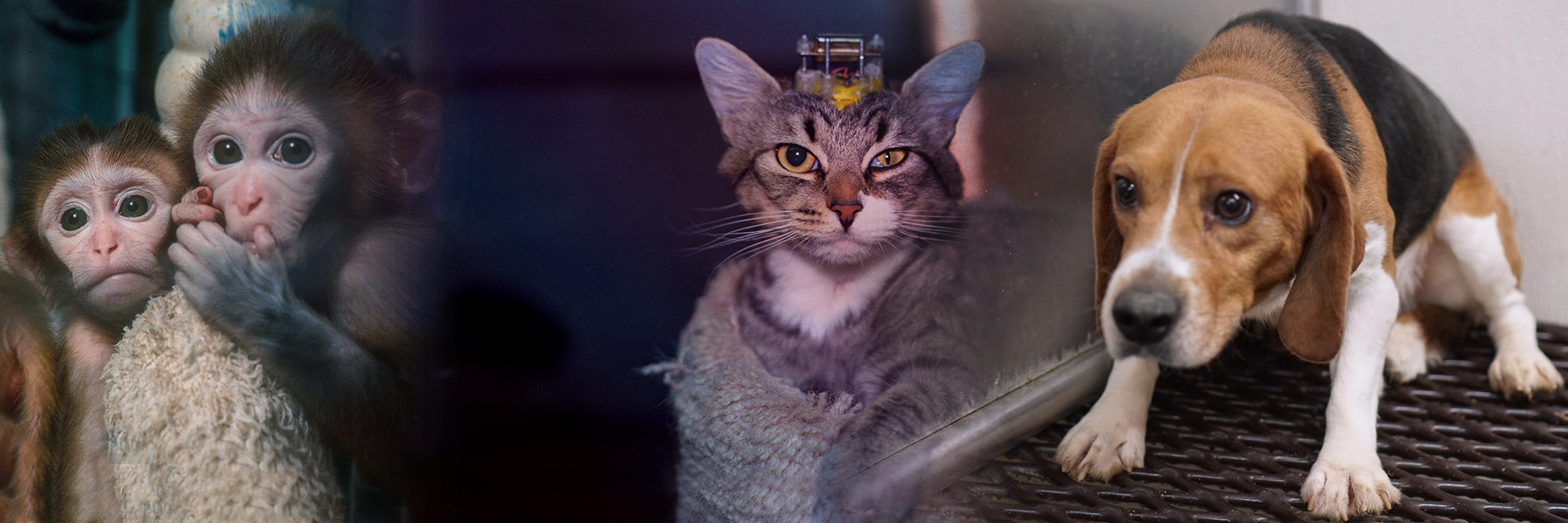
PHOTO: The legs of a cat used in a pyschology lab are deliberately deformed. Brian Gunn / IAAPEA, animalexperimentspictures.com
|
THIS ALERT IS CLOSED. It is archived to use for a letter-writing example or background research. UPDATE: Under New Ban, NIH-Supported Research Ends Use Of Random Sourced Cats 2/8/12 - National Institutes of Health (NIH), the main funding arm of U.S. biomedical research, published plans to "transition from use of Class B cats." As of October 2012, a ban on cats from random source dealers (B dealers) takes effects. Pound Seizure: Each year shelter animals are purchased by dealers and sold to research and education sites for use in excruciating procedures. Class B dealers also amass dogs and cats from free-to-good home ads or employ bunchers to steal them from yards and cars. Behind a lab's locked doors, they are gone forever. It is impossible to track an animal after he or she undergoes toxic dosing, invasive surgery and other experiments. Kinship Circle's Profit From Misery pushed for legislation to end the sale of companion animals to research. Use of Class B animals is astonishingly irresponsible, given ongoing innovations in animal-free research. Some Congressmembers agreed and prompted a National Academies of Science committee to further investigate. A 2009 report, Scientific and Humane Issues in the Use of Random Source Dogs and Cats in Research, concluded that NIH- financed studies do not need dogs and cats from Class B dealers. The report also recognized the unscrupulous nature of dealers, known for Animal Welfare Act violatoins. Frustratingly, the 2012 rule to end use of USDA Class B cats does not extend to dogs. NIH opted to postpone a ban on dogs until 2015. UPDATE SOURCES: |
Disaster aid for animals + action for all hurt by greed, cruelty, hate.










